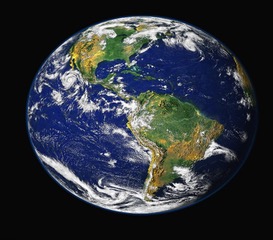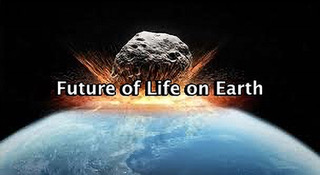Future of life on Earth: Some possible threats
We often consider life on Earth to be static while going about our daily business. We don’t consider that we are a part of a huge, expanding cosmos. Our planet is only a tiny portion of the vast, ever-expanding expanse that is our universe. Numerous variables are at work in our solar system and beyond, whether or not we are aware of them.

The earliest signs of life on Earth date back to some 4 billion years, and sophisticated species like humans—that is, people like you and me—have only existed for a few hundred thousand years. Whether you like it or not, life on Earth is a transient activity that will eventually come to an end. On the one hand, there are a lot of cosmic threats that might endanger life as we know it. The cosmos doesn’t care if anything snuffs us out, so those are the cosmic breaks—there are no scary powers out there to mysteriously safeguard us.
An asteroid may hit the earth
There are several risks. Numerous (scary) films have been produced based on this plausible truth. The solar system’s smaller bodies come first. There are more than a million known, and planetary scientists are often concerned about the so-called near-Earth objects, whose orbits take them inside Mars’ orbit. In this group there are known to be around 35,000 asteroids and about 130 comets and more. Luckily, none have the same devastating potential as the K-Pg Impact, the calamitous event that exterminated the dinosaurs 66 million years ago. Such a collision from an asteroid with a diameter of at least 10 kilometers may wipe out civilization. But additional massive asteroids or cometary nuclei may approach Earth and strike us.

Super Nova radiations may bring life on earth to end
There are other cosmic threats. What about a supernova that happened not too far away and released a powerful, radioactive blast that would destroy life on Earth? In a similar vein, life on Earth may terminate with a nearby gamma-ray burst. A extremely low-mass black hole or antimatter entering our realm might pose less of a threat. Though unlikely, it is theoretically feasible. However, there are risks extremely near to home as well. What about a massive coronal mass ejection from the Sun, which provides us with the energy necessary to support life on Earth in the first place, or an extraordinarily strong geomagnetic storm? There are other dangers as well.
Putting catastrophic occurrences aside, we now know when life on Earth will cease. As you can see, the Sun is a variable star in addition to being the source of our energy on Earth and a main sequence star of a relatively average weight. Its bolometric magnitude, or the total quantity of energy it emits, is gradually growing over time.

Sun, the greatest source of energy, as threat to life on earth
Given the unpredictability of the Sun, the question of how long life on Earth would survive has been a focus of research over the last generation. When biologist Michael Rampino of New York University and atmospheric scientist Ken Caldeira of the Lawrence Livermore Laboratory in California collaborated on a significant research, it was published in 1994. Earth’s long-term perspective was established by their publication, “The Goldilocks Problem: Climactic Evolution and Long-Term Habitability of Terrestrial Planets.”
The Rampino-Caldeira investigation looked into why Earth is ideal for life, Mars is too cold, and Venus is too hot. Of course, the main actor in this game is the Sun’s long-term development. The conventional view is that life on Earth shouldn’t be able to survive for very long since it should be too cold. However, because of greenhouse warming caused by carbon dioxide and water in our atmosphere, it is warmer than the freezing point for water. Habitability depends not just on a planet’s surface reflectance and distance from the Sun, but also on greenhouse gas moderation.

In large part because of its enormous amount of water, Earth is the planet in our solar system that is ideal for life. Much more is present on our planet than might be expected given our separation from the Sun. However, there will come a point at which everything will change.
Oceans may boil out
Over the next few hundred million years, the Sun’s growing radiation will fundamentally change our planet, regardless of other variables. According to simulations, the Earth’s surface will reach 80°C (176°F), or almost the boiling point of water, in 1.5 billion years. This is not related to the climate change caused by human use of fossil fuels, though it may exacerbate the issue. The boiling point might occur more sooner if there is more carbon dioxide in the atmosphere.

To cut the long into short, Astronomers examining a range of significant variables, including temperature at the surface of the Earth, water mixing ratios in the stratosphere, and other information, determine that the Earth’s seas may disappear in a billion years or fewer. And trust me, that will very much spoil everyone’s weekend when the planet’s waters boil away. That will mean the end of life as we know it, or at least life that is pretty fragile. Hardier creatures, such as microorganisms found under the planet’s surface, could be able to survive for a little while longer, but for humans expectation are not high.

No responses yet